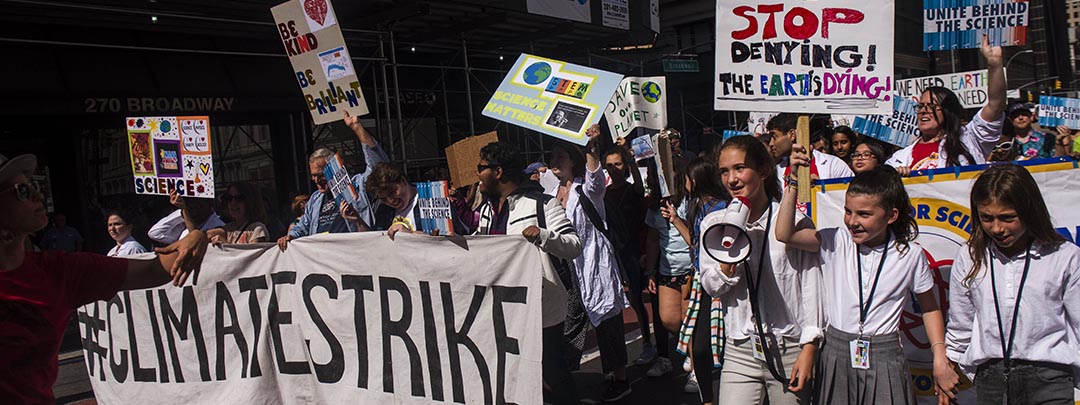At COP27 and Beyond, Women's Voices Belong at the Heart of Climate Change Negotiations
Nov 16, 2022
|
Marisa O. Ensor
The United Nations Conferences of the Parties (COPs) are the largest climate-related conferences worldwide. During these meetings, nations have negotiated groundbreaking and legally binding climate treaties, such as the Kyoto Protocol in 1997 and the Paris Agreement in 2015. Running from November 6-18 in Sharm el-Sheikh, Egypt, this year’s COP (COP27) is bringing together political leaders and representatives from 190 countries, as well as thousands of members from civil society groups, to discuss climate-related topics. As delegates strive to negotiate the most contentious issues—loss and damage, and climate finance for the Global South—women’s and Indigenous People’s voices must be heard and heeded because it is their fate that is most at risk.
Women and Girls between Vulnerability and Resilience
The effects of climate change on women compound existing gendered inequalities such as lower political representation and higher financial insecurity. Extreme weather events have a greater impact on the poor and other vulnerable segments of the population, and even more so on those living in nations riven by conflict. Competition over food, water, land and other resources made increasing scarce by climate change poses a serious geopolitical risk that can lead to armed conflicts whose disproportionate impact on women and girls is well documented.
UN studies show that 80 percent of people displaced by climate change are women. In conflict-prone South Sudan, four consecutive years of flooding have led to large-scale displacement of people and cattle and destroyed crops and property. The widespread acute food insecurity and malnutrition that followed have left women particularly vulnerable. Women tend to experience greater food insecurity than men due to their socially ascribed roles as caregivers to children and older persons, which often means women are less prioritized when food is allocated. The floods in Pakistan earlier this year are another case in point—huge numbers of rural women have lost their homes and their livelihoods. Furthermore, about 650,000 women are facing disruptions in pregnancy-related health care.
At the same time, women and girls are leading the climate revolution around the world in advocating for climate action and providing solutions. Young women are on the streets demanding meaningful action. Indigenous women are mobilizing in their communities, often at great personal risk. Female scientists are doing critical climate research in labs and in the field, and many women parliamentarians are pushing for climate-positive policies in government.
Women and Girls in Climate Negotiations
The UN’s strong commitment to promoting gender equality is paving the way for progress. Over the years, women have come to comprise a larger percentage of the delegates to the UN Framework Convention on Climate Change’s (UNFCCC) constituted bodies—the principal technical and decision-making committees for global climate deliberations. The Gender Action Plan calls for women’s full, equal, and meaningful participation in the UN climate process and to ensure a prominent role for women in decision-making and climate policies. Many countries’ national climate action plans now cross-reference gender, and country delegations include more women than ever before. For example, in 2021, the Adaptation Committee reached 68 percent women’s membership.
Nevertheless, women still face many barriers at the main negotiating tables. By the UN’s own estimates, women and girls make up only 30 percent of global and national climate decision-making bodies. At last year’s plenary sessions at the COP26 in Glasgow, men had a disproportionately higher share of active speaking roles at the important plenary sessions and took up 74 percent of the speaking time.
In his remarks at COP27’s opening plenary, UN Climate Convention Executive Secretary, Simon Stiell, underscored that women and girls must be placed at the center of climate decision-making and actions towards achieving better outcomes. Despite dedicated events on gender, multiple attendees have been remarking on the comparative scarcity of women in attendance. “Once again, another example of lack of women representation and another reason why there is so much work yet to be done to achieve gender parity,” a commentator wrote. “If women keep being left out of top decision-making processes, the outcomes of such will keep on being one-sided,” she added. Of the 110 national leaders present at this year’s inaugural global event, only seven were women.
Beyond COP27
Humanity’s basic right to life is being threatened by insufficient action in the face of the climate emergency, cautioned Volker Türk, UN High Commissioner for Human Rights. According to the Intergovernmental Panel on Climate Change (IPCC), nearly half the world’s population will be at severe risk of climate change impacts by 2030, even with global warming of just 1.5-degrees. The UNFCCC is clear that, effectively responding to present and future climate risks requires a significantly increase in the scale of adaptation. All players must come on board – governments, financial institutions, the private sector and, of course, civil society including women’s groups, youth groups, and networks of Indigenous environmental defenders.
A diversity of women—in grassroots movements, feminist collectives, women of color—have historically spearheaded more equitable and inclusive solutions to climate change. As Catherine McKenna and Amy Myers Jaffe recently wrote for Scientific American, “Women are leading the climate revolution. At COP27, speakers should cede time to hear what they have to say”.
Dr. Marisa O. Ensor is an applied environmental and legal anthropologist currently based at Georgetown University’s Justice and Peace Studies Program. She is also the current Chair of the Environmental Peacebuilding Association’s Gender Interest Group (EnPAx-GIG).
